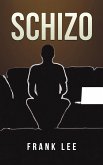The process of shipping items can be filled with moments of hope and frustration, as teams work together to ensure timely delivery. Transporting goods across long distances requires a great deal of effort and hard work from postal services, which can sometimes put a strain on their resources and on the environment. Freight ships play a crucial role in the world's economy, carrying a significant percentage of global exports. However, as the world evolves, it's important to consider the sustainability of these shipping practices and their impact on the economy. Some view the freight shipping industry as a "lone wolf" in the world of commerce, but the future of this vital sector remains uncertain. Sigh delves into the complex web of emotions, economics, and logistics that are entwined with the simple act of shipping a package.








